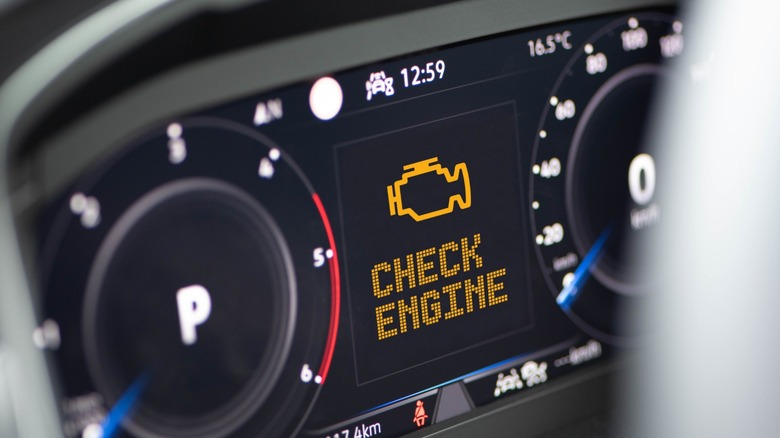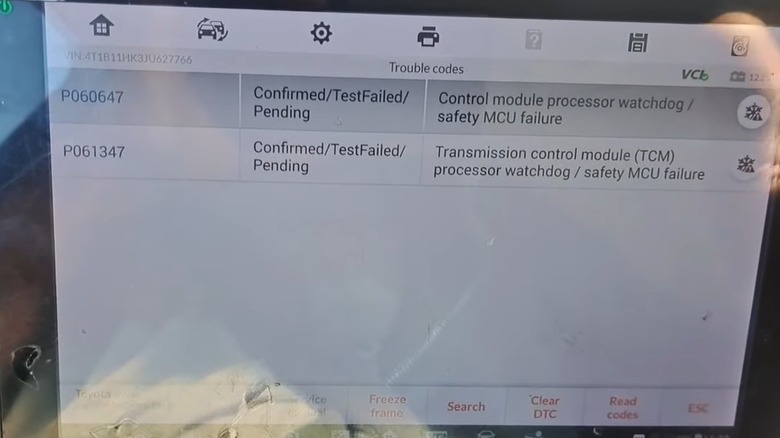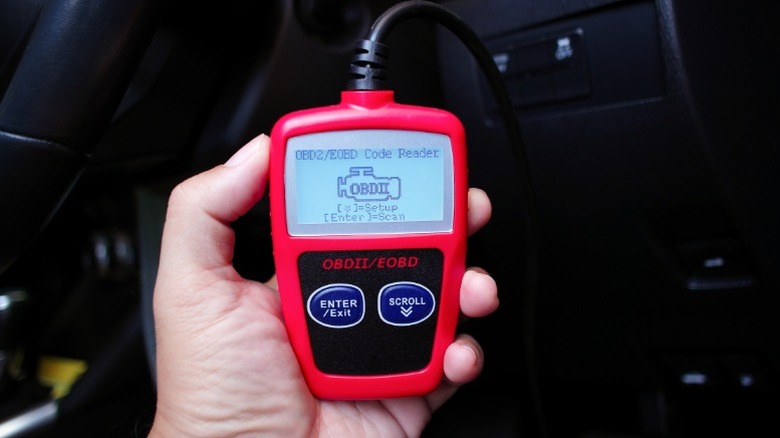Can The Check Engine Light Come On For Transmission Issues?
In order for our cars to carry us to and from our various destinations reliably, all the parts must work together smoothly. The fuel and air intake systems provide the ingredients necessary to power the engine, the suspension system supports the vehicle's weight and helps with handling, the transmission scales engine power to different speeds and driving scenarios, and the computer and electrical systems tie all those components together and monitor them for issues.
Modern vehicles come equipped with onboard diagnostic (OBD) systems, which work with the car's principal computer or powertrain control module (PCM) to monitor various vehicle systems and alert the driver when something isn't working right. When the OBD system detects an error or malfunction, it can store a diagnostic trouble code (DTC) and activate the check engine light. However, despite the name, your car's check engine light doesn't only indicate problems with the engine. In reality, the OBD system monitors virtually every part of the vehicle. While there are other dashboard warning lights designed specifically to alert you to issues with various other systems, like the anti-lock brake (ABS) light or the low oil pressure light, the check engine light can appear for a many different reasons, including problems with the transmission.
A faulty or malfunctioning transmission can trigger the check engine light for a handful of reasons, including things like an overheating gearbox or issues with the transmission control module (TCM). If you're interested in learning more about the different transmission issues that can cause the check engine light to appear, stick around. Here's what to know about transmission DTCs and how to diagnose them.
What transmission issues can trigger the check engine light?
Automotive transmissions are complex components composed of many individual parts, like solenoids, clutch packs, and numerous gears. With so many parts, there's a lot of room for things to go wrong, and when that occurs, your vehicle's OBD system is likely to activate the check engine light.
Some of the most common transmission issues that may trigger your check engine light include electrical issues, like problems with the TCM, engine control module (ECM), or the transmission speed sensors. These malfunctions can take numerous forms and lead to the appearance of various DTCs and other symptoms. For example, a P0613 code usually indicates an electrical problem with the TCM and can cause gear shifting issues, while a P0720 code typically means the output speed sensor is malfunctioning and can lead to rough gear shifts and engine misfires. Besides electrical issues, an overheating transmission can also cause the check engine light to appear and often results in the P0218 DTC. A car's gearbox is liable to overheat due to a handful of reasons, including things like low or dirty transmission fluid and malfunctioning parts, and it can cause symptoms like strange noises, a burning smell, and stiff gear shifts.
Besides the DTCs described above, other common transmission codes include P0614, P0700, P0730, and various others. But how exactly do you identify these codes, and, if there are so many, how do you know what they mean? That's exactly what we're going to explore now.
How to diagnose a check engine light
A lot of different issues can cause your car's check engine light to appear. Often, it's not immediately clear what triggers the light. However, it's common for transmission problems to cause a few symptoms in addition to the appearance of the check engine light. That may help you narrow down the source of the light to your vehicle's gearbox. However, you'll still need to identify the code to pinpoint the ultimate problem within the transmission.
For modern cars built after 1996, diagnosing a check engine light is relatively simple, but you will need a special OBD-II scan tool or code reader. These devices enable you to connect to the OBD system to view any active or stored DTCs, and many of them even allow you to perform other types of diagnostic work, like viewing live data or running system tests. To use a code reader, you simply need to connect the device to your vehicle's OBD-II port, which is usually located beneath the steering wheel. Then, turn your ignition on, but do not start the engine. Depending on the type of scan tool you use, you can then choose to view any DTCs or use one of the device's other features.
If you own an older vehicle with a first-generation OBD system (those built between 1988 and 1995). You can access the OBD system using some modern OBD-II scan tools with OBD-I adaptors, or you may have to perform a series of steps using dashboard buttons to access the codes. There are a few ways to identify a check engine light code without a scanner, but most of those methods only work for older cars and a handful of modern vehicle makes.


